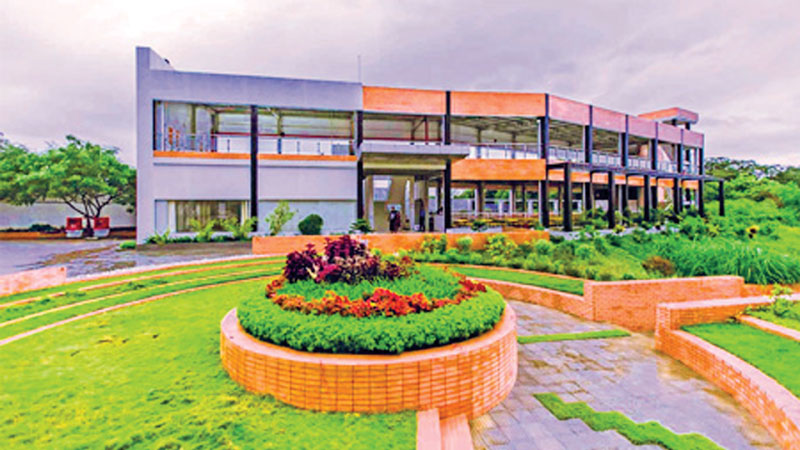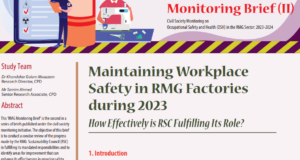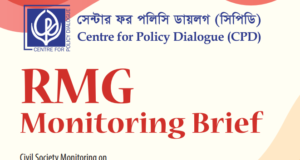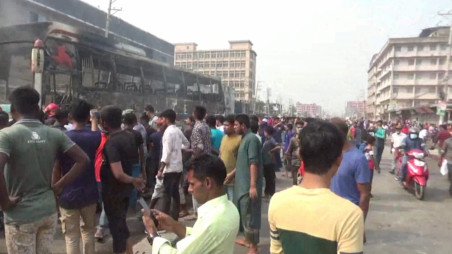Published in The Independent on October 25, 2017

Civilisation itself started with the invention of clothing in one sense, and since then, it has become one of the fundamental needs of human beings. However, the global demand for clothing is always on the rise, most particularity with today’s ever-increasing population. But producing the apparels also has a dark side as pesticides are used in growing cotton, toxic dyes are used in manufacturing and a substantial amount of natural resources (i.e. water and energy) are used in processing, manufacturing, and shipping, while a lot of wastages and pollutants are generated in its production process.
According to an article in Forbes, the apparel industry with a global market size of $3 trillion is annually accountable for 10 percent of global carbon emission, and remains the second-largest industrial polluter just after the oil industry. Currently, the global apparel sector is in a dilemma in terms of continuing its production on the one hand and minimising its production-related environmentally harmful effects on the other hand. Against this backdrop, it is the hour of need to produce textile and apparel goods in a sustainable or eco-friendly ways so as to achieve green growth. It is encouraging to note that major global leading fashion players such as H&M, Hugo Boss, Nike, Levis Strauss, and Adidas are now conscious about reducing carbon and other emission related to the production of apparels. Indeed, their consciousness and steps in this regard are giving a new shape to the trend of the global apparel business in recent years. When it comes to global consumers, particularly who have the knowledge or are concerned about the environment are willing to pay more for the green apparel clothing.
A number of available studies, reports, and surveys have revealed the fact that in the global context, environmentally conscious consumers are increasing day by day. They are ready to make personal scarifies in terms of money or willing to pay more for the socially responsible or eco-friendly consumer products.
And most importantly, low-carbon economy and green growth in manufacturing industry has been highly emphasised in several national and international and organisational efforts, strategies, and policies over the years. Among them the efforts of UNIDO, UNEP, UNESCAP, Green Peace, World Bank, Agenda 2030 SDGs, and Green growth efforts in the USA, India, China, Malaysia, Singapore, and South Korea are notable.
Green growth means low carbon growth (i.e. tolerable amount of carbon emission), and reduction of greenhouse gasses during the production. According to London School of Economics and Political Science (LSE), the widespread use of the term ‘green’, is a broad consensus about what it means. It is very often treated as a synonym for or an aspect of sustainable development. However, in contrast to conventional growth, it is generally understood that industrial growth is a green one when it uses natural resources in a sustainable manner by taking into consideration of its scarcity while ensuring minimum effects on the natural environment and thus trying to make the world a better and liveable place.
When it comes to green industrial growth, Bangladesh RMG industry has been found to play a pivotal role in achieving green industrial growth in the country, since it is for the 80 percent of the total export earnings. A number of initiatives in term of greenisation of the RMG sector continue to take place so as to turn its production process and export growth into green ones such as installing green building, using eco-friendly and resource-efficient technologies and techniques, harvesting rainwater, installing effluent treatment plant (ETP), installing solar power plant, and servo motor for power generation, managing hazardous chemical properly and so on. And these initiatives have already taken the image of Bangladesh with regard to textile and RMG production to a new height globally and these green factories are ensuring workers health and safety through better working environment, manufacturing productivity and protecting their surrounding environment from being polluted.
Spill over effect has already been observed in the garment sector of Bangladesh as a growing number of factory owners are now willing to convert their existing factories into green building and go for eco-friendly production techniques.
Installing “green building” in manufacturing firm is considered as one of the crucial parts of “Going Green” approach as it is designed in such a way that has a lot of attributes in terms of making efficient use of resources, particularly water and energy, protecting indoor health safety, minimising surrounding negative environmental impacts and maintaining environmental amenities. The acceptance of green industry continues to rise globally. Currently, the registered projects for LEED around the world are 1, 20,549, while the certified projects are 61,507. It is stunning to note that between the years 2000-2002 there were 30 certified green building from USGBC (US green building council) but the number has reached to 22,721 between the years 2015-2017.
Bangladesh started its journey in 2011; the first USGBC LEED certified project was CIPL, a garment factory located in Savar, Dhaka. However, the present status of Bangladesh RMG industry with respect to installing green factory seems to be revolutionised, and there are 24 Gold, 14 Platinum, and 5 Silver rated and 2 only certified RMG factories, while a total of 323 registered projects including textile and RMG firms, commercial complexes and other industrial firms are in the LEED certification process as of October 2017. At present, Bangladesh is the home to seven highest-rated green factories (i.e. platinum, 80 plus points) among the world’s ten highest rated factories. And of the seven highest-rated green factories in Bangladesh, 3 are garments factories namely Remi Holdings Ltd., Plummy Fashions Ltd., and Vintage Denim Studio Ltd., and among them, Remi Holdings Ltd. is the highest platinum rated building in the world with 97 points.
In Bangladesh, “green factory” installation was started with the factory owner’s own finance and till now it is almost solely financed by the owner’s money, given the inadequacy of the available loan facilities. Bangladesh, so far, is the home to the top three environment-friendly garment and textile factories in the world. It is to be noted that apart from RMG and Textile firms, a few firms particularly leather and footwear, and also some commercial complexes in Bangladesh have converted their establishments into green ones. Most likely, they are being motivated by the RMG green factories. There are some problems for the fullest implementation of green industrialisation in Bangladesh RMG that need to be addressed urgently. These include absence of single and specific policy formulation, lack of institutional capacity building resulting in the lack of adequate indigenous expertise, lack of sufficient green financing with low costs, suitable price of producing eco-friendly goods from the buyers’ side etc.
But being optimistic, it can be said that by dint of the favourable and helpful mindset of the government and most importantly the willingness of the factory owners, the sector is highly expected to be able to realise the fullest implementation of green industrialisation effort.
Recently the Finance Minister, AMA Muhith said in his concluding budget speech at the Parliament that the government has set corporate tax for the green RMG industry at 9 percent (reduced from previous 20 percent), whilst it is 12 percent for the non-green ones. At the same time, very recently (on 17 August, 2017) Bangladesh Bank issued a circular relating to cut the interest rate of GTF (green transformation fund) for the export-oriented textile and textile products and leather manufacturing industries.
As far as the trade association’s efforts are concerned in implementing green industrialisation, BKMEA (Bangladesh Knitwear manufactures and Exporters Association) as the apex trade body of Bangladesh knitwear sector has been committed to ensuring sustainable development in every step of knitwear production process to turn this sector’s growth into green one. It has a visionary plan to convert one-quarter of the knit factories into the green ones by the year 2021. To this end, BKMEA with its “Green Industry Development Cell” that has a pool of experts continues to provide consultation and sound support to its member factories willing to convert to green firms. Notably, as a recognition of this noble “Going Green” initaitives, the trade association body has become the USBC member since 2015 as the first-ever association in Bangladesh.
In conclusion, Bangladesh’s broad industrial sector’s green growth is dependent on the RMG sector, particularly for the manufacturing industrial sector which has been envisioned in both the Seventh Five-Year Plan (FY2016-FY 2020) and 2030 Sustainable Development Goals. The “Going Green” approach would create more employment opportunities and earn more export volumes through getting attention from the global environmental conscious consumers in the near future. On the other hand, the sector is highly expected to act as a charismatic influence to other manufacturing industries having high environmental costs of production for taking the similar best approach” Going Green”.
 CPD RMG Study Stitching a better future for Bangladesh
CPD RMG Study Stitching a better future for Bangladesh



